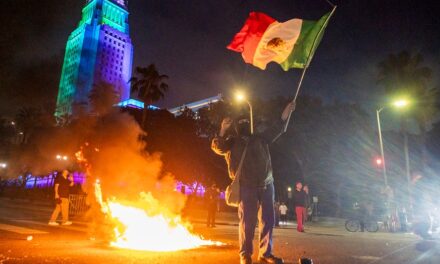In a recent turn of events, journalists covering the White House have found themselves in the spotlight, following a pointed critique regarding their reporting on President Biden’s apparent decline during the White House Correspondents’ Dinner (WHCD). The annual event, where journalists and political figures mingle, usually garners significant attention, but this year sparked controversy surrounding the media’s portrayal of the president’s performance.
Critics have voiced concerns that coverage from various outlets lacked depth and failed to adequately address the noticeable discrepancies in President Biden’s demeanor and performance during the event. The WHCD, typically characterized by humor and light-heartedness, provided an unconventional backdrop for those who observed Biden closely. Analysts and commentators alike felt that the event revealed a deeper, more concerning trend in the president’s public appearances.
As Biden delivered his remarks, many attendees noted moments that seemed unusually awkward or hesitant. While the president attempted to connect with the audience through light-hearted jokes, several instances of stuttering and pauses were apparent. These instances were recorded and discussed in various forums, igniting debates about his cognitive state and overall energy levels.
In the aftermath of the event, multiple journalists initiated discussions concerning their own reporting. They voiced frustrations over the perception that their coverage was overly lenient, thus potentially downplaying significant issues related to the president’s health and vitality. Some reporters acknowledged that in striving to maintain an objective stance, they may have inadvertently softened the implications of what they witnessed.
As reactions unfolded, members of the press came together to reflect on their roles and responsibilities. The debate among journalists centered on whether it was their duty to provide fair and balanced reporting or to emphasize potentially troubling aspects of Biden’s performance. The dialogue sparked a broader conversation about the relationship between the media and political figures, especially during moments that could affect public perception or trust.
Press officials pointed out the inherent challenges of covering a president who is often portrayed by supporters as being exceptionally capable yet also faces scrutiny due to signs of aging. Some argued that their responsibility lies in presenting the president in a light that highlights achievements and progress rather than fixating solely on perceived failings. However, others contended that avoiding difficult truths could lead to a disservice to the public.
The criticism did not just originate from outside the press corps; many journalists expressed the need for internal dialogue about standards in reporting that should accurately represent political leaders. Some members called for a more rigorous examination of the president’s public engagements, suggesting that a more critical lens may be necessary to provide the public with a clearer picture of his capabilities.
Additionally, conversations among journalists echoed the sentiments of frustration regarding the expectations placed upon them. Many emphasized the importance of transparency, fostering an atmosphere where questions could be raised without fear of reprisal or backlash from political allies or the administration itself. This dialogue points to the underlying tension in the media’s role as both a watchdog and a societal commentator.
In assessing the coverage prior to the WHCD, some reporters recognized a trend in a broader media landscape that sometimes skews towards narratives that do not upset the balance, particularly when it comes to the personalities involved in politics. Taking this criticism to heart, journalists expressed hope for a renewed sense of commitment to covering future events with more resolve and critical analysis.
The rebuilding of trust is critical in light of the complexities surrounding an administration that has constantly faced polarization and scrutiny from all sides. In recent years, the political landscape has grown increasingly fragmented, which has prompted media professionals to reassess where their loyalties lie. The challenge remains: how to balance the presentation of a political figure while remaining honest about the reality of their performance.
Moreover, discussions during this period focused on how to enable a more informed electorate. Journalists underscored that merely producing articles and reports is not enough; there needs to be a dedication to fostering an engaged and educated public that can interpret various viewpoints and accept the complexities involved in political leadership.
As conversations continued to circulate within the press community, some expressed concern over the evolution of press norms. Misinformation and slippery narratives from competing factions have illuminated the fragility of public trust in media. This, in turn, complicates the narrative surrounding political figures like President Biden.
Reporting on the WHCD has blurred the lines between traditional journalism and entertainment, as humor became a focal point of the evening. While laughter dominated the narrative, the critique of reporting emerged as a parallel thread that many could not ignore. Recognizing that comedy and lighthearted banter can perpetuate a sense of complacency, journalists have reiterated the need for guidance in framing their reports in ways that encourage active public engagement.
As the media landscape continues to adapt, a growing sentiment arose calling for a re-engagement with core tenets of journalism. Transparency, accountability, and dedication to thorough reporting emerged as fundamental principles that should guide how the media navigates the complexities of political events, including those as glamorous yet pivotal as the WHCD.
In conclusion, the criticism aimed at White House reporters regarding their coverage of President Biden at the WHCD has provided a crucial opportunity for introspection within the press. As the landscape shifts due to evolving political realities, journalists must wrestle with their responsibilities and redefine their commitment to holding power accountable. The events at the WHCD underscore both the need for vigilance in reporting and the understanding that the media’s role is to reflect the unvarnished truth—whether it be in humor or hardship. By fostering these discussions, the press can evolve in ways that continue to serve the public interest, ensuring that democracy remains transparent, informed, and robust.
































